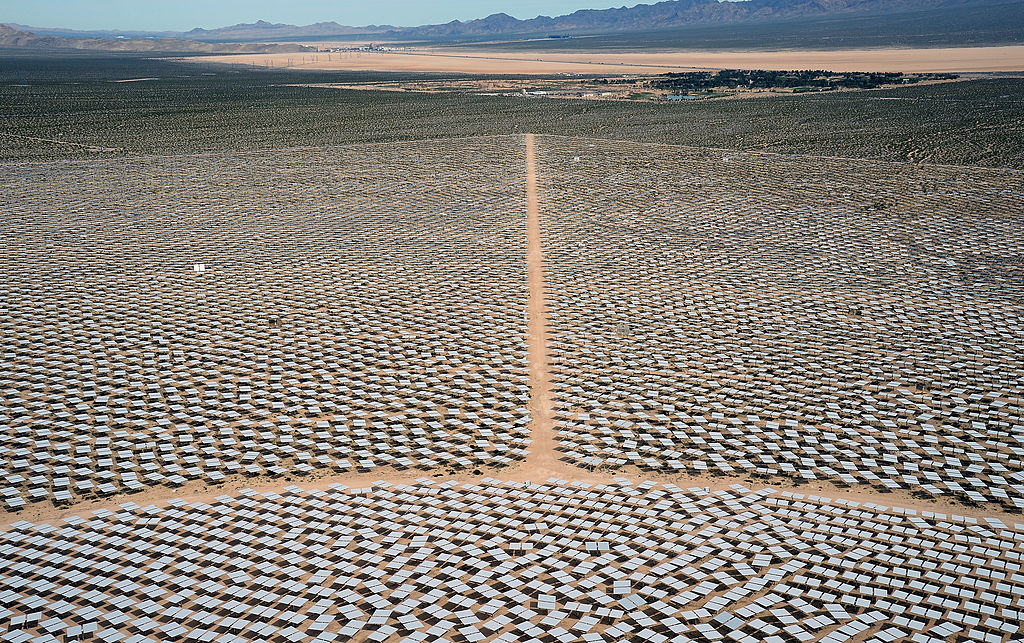A California utility wants to end its agreement to buy power from a giant solar farm in the Mojave Desert because it found cheaper alternative clean energy sources, a move that will sound the death knell to what was once the world’s largest solar plant, according to reports.
Pacific Gas & Electric said it agrees with its owners, including NRG Energy Inc., to end its contracts with Ivanpah Solar on the California-Nevada border “to save customers money.”
The contracts were set to run through 2039.
If approved by regulators, the end of the deal would lead to the closure of two of the plant’s three units in 2026, the Associated Press reported.
Southern California Edison, which buys the remaining power from the plant, is also in talks with the U.S. Energy Department to buyout its Ivanpah contract, the AP reported.
PG&E said Ivanpah Solar, which formally opened in 2014, was built when developers were searching “to find efficient and affordable technologies to reduce the need for greenhouse gas-emitting fossil fuels.”
But since then, other types of renewable energy have been developed that cost less to produce.
Ivanpah uses a process known as concentrating solar power.
The plant uses about 350,000 mirrors, each about the size of a garage door, to reflect sunlight to the top of a tower where the sun’s power heats water to make steam to power turbines that generate electricity.
But Ivanpah was unable to compete with photovoltaic solar technology that uses devices like rooftop solar panels to generate electricity.
“Solar photovoltaic panels and battery energy storage were once unaffordable at large scale. Today, after years of sustained investment and improvement, those technologies provide thousands of megawatt hours of clean electricity for PG&E customers,” PG&E Senior Director, Commercial Procurement Don Howerton said in a statement.
NRG Energy said once regulators approve PG&E’s bid to terminate the contract, Ivanpah will begin closing its units in 2026.
“Once deactivated the units will be decommissioned, providing an opportunity for the site to potentially be repurposed for renewable [photovoltaic] energy production,” it said.







